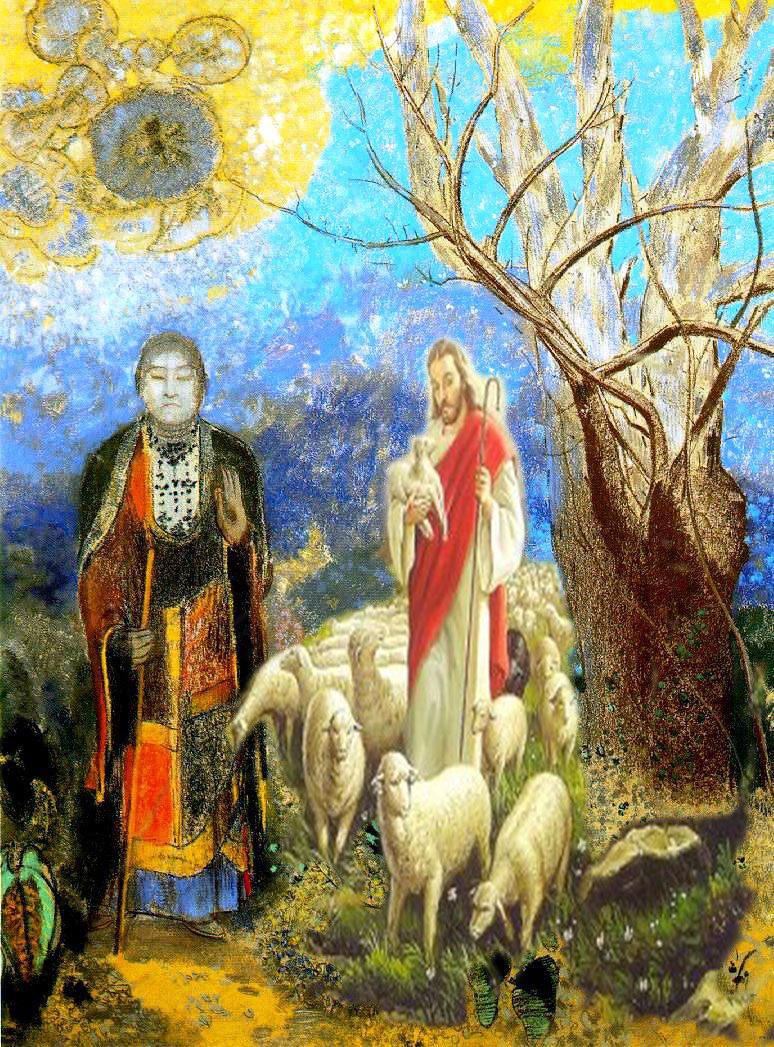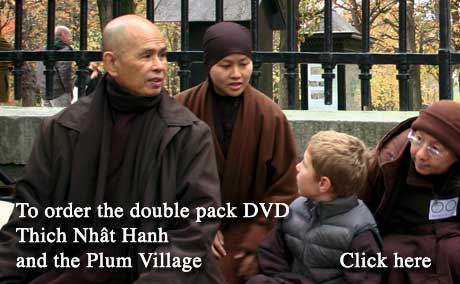
In this book the Vietnamese monk who has been nominated for the Nobel Peace Prize discusses the parallels between Christianity and Buddhism. Thich Nhat Hanh’s philosophy is that people should not abandon their religious traditions, but instead should study and use the tools of other traditions so that they can rediscover and strengthen their own spiritual roots. This controversial attitude is rejected by many Christians and Buddhists, but Nhat Hanh defends his ideas strongly. He speaks out about the misgivings of both groups and even challenges comments made by Pope John Paul II in his recent book Crossing the Threshold of Hope.
He draws many compelling parallels between the two traditions. He compares mindfulness to the Holy Spirit, viewing both as agents of healing; he connects the importance of food in the Buddhist tradition with the sacredness of mealtimes in Jewish and Christian traditions, including the Eucharist; he discusses the similarities between the Christian commandments and Buddhist precepts as valuable guidelines to transforming suffering; he links the Buddhist trinity—invoking the “Three Jewels”, Buddha, Dharma and Sangha—and the Christian Trinity as equally valid ways of taking refuge; and he emphasizes the in-depth study of the teachings of both the historical Jesus and historical Buddha so that they can be used as a model for life. “When we understand and practice deeply the life and teachings of Buddha or the life and teachings of Jesus, we penetrate the door and enter the abode of the living Buddha and the living Christ and life eternal presents itself to us”.
At the same time he challenges both groups to be true to their own teachings and questions whether the historical expression of Church or Sangha are really in accord with what the founders intended. “Are we making Jesus’ presence real in our churches today? Are we making the Buddha’s presence real in our Sanghas? . . . ” . . . “Are the Sangha and the Church of today in real touch with people? Are they touching the poor and oppressed, or do they prefer to touch only the wealthy and powerful?”
Thich Nhat Hanh shows a remarkable grasp and understanding of the Christian doctrine and way of life. To this extent his dialogue is one of sympathy and even empathy. The whole tone of the book is one of peace. But it is a peace which obviously flows from within. As he remarks: “The most basic principle of interfaith dialogue is that the dialogue must begin, first of all, within oneself. . . . When we have peace within, real dialogue with others is possible.”
Certainly the book is an important one, not to say even essential for anyone involved in dialogue. It is one that even Pope John Paul II might profit from reading! His comments about the Pope and his book are incisive and yet respectful. But he speaks truth in a way that brings all to peace. It is to be hoped that the book will be widely read and used.
By: Fr. James Conner
Source: Monastic Interreligious Dialog
recommended reading :
Dalai Lama, The Good Heart: A Buddhist Perspective on the Teachings of Jesus (Relié),Ed:Wisdom Publications
Thich Nhat Hanh, Living Buddha, Living Christ , Ed: New Ed
Leo D. Lefebure, The Buddha and the Christ: Explorations in Buddhist and Christian Dialogue, Ed:Orbis Books
Robert Elinor, Buddha & Christ: Images of Wholeness , Ed:Weatherhill Inc.





